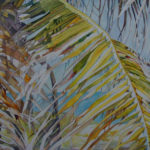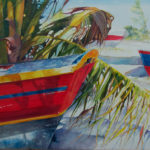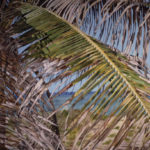Often when I’m using a lot of one color, mixed or unmixed, I make a large amount in a small mixing cup. This allows me to never run out of the color if I’m in the midst of doing a big wash or something else. Mixing cups can be empty small wide yogurt containers, or small pudding/applesauce containers. You can also find inexpensive white cups, usually 3 to a package at the art stores. I find having my paints premixed in large quantities is essential. Nothing goes to waste. Extra paint can be stored in an empty container, like a baby food jar or poured into an empty palette well.
Keep Painting!




